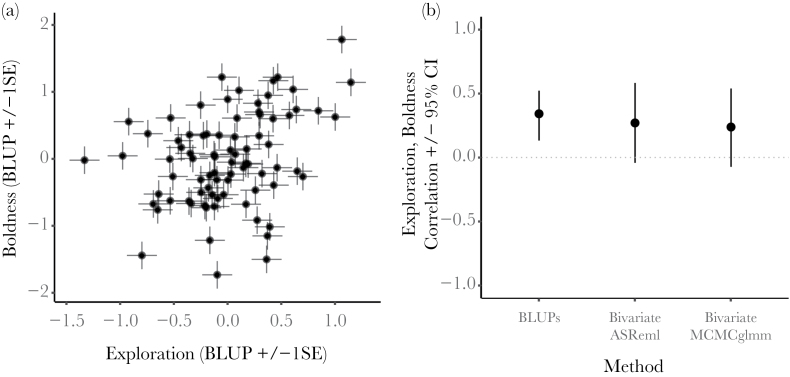Figure 1.
Taken from a worked example provided in the Supplementary Information, (a) shows a scatterplot of individual-level estimates (BLUPs) of 2 personality traits, extracted from separate univariate models. Bars around each point show the standard error of the estimate for both traits, which is ignored by subsequent analyses of these BLUPs. Testing a correlation using only BLUPs and ignoring their error results in an anticonservative test, as illustrated in (b). The correlation test using BLUPs produces narrow confidence intervals, and a correspondingly small P value of 0.0019, indicating statistical significance (“BLUP” on x axis). However, testing the correlation directly in a bivariate model using REML and retaining all data returns larger (approximate) confidence intervals which straddle zero (95% CI approximated as r ± 1.96SE) and a P value (based on a likelihood ratio test) of 0.12, such that the correlation is not statistically significant (“Bivariate ASReml” on x axis). Using the same data, Bayesian 95% credible intervals also cross zero, which indicates a lack of statistical significance (“Bivariate MCMCglmm").

